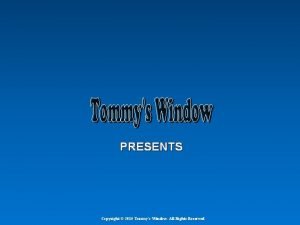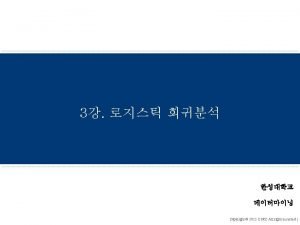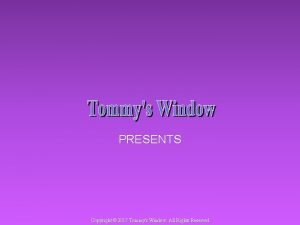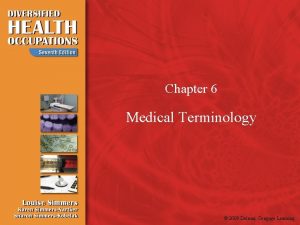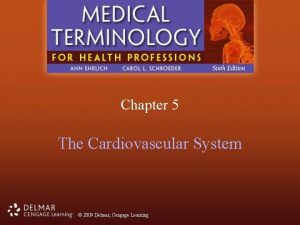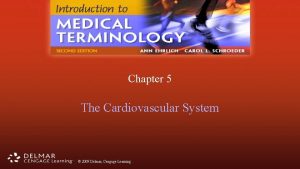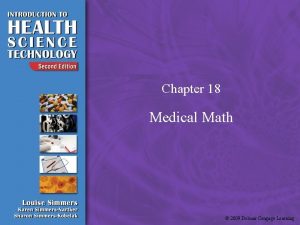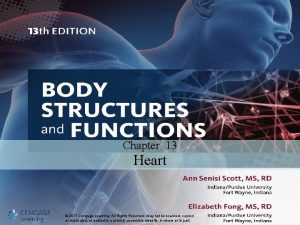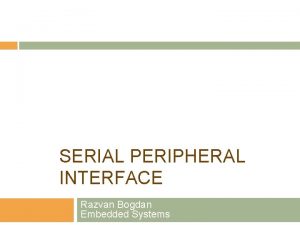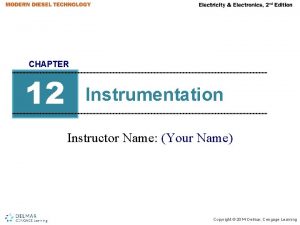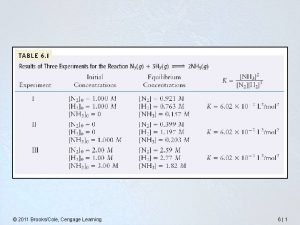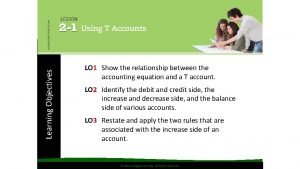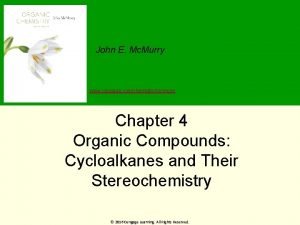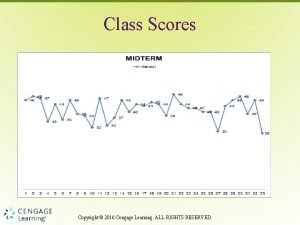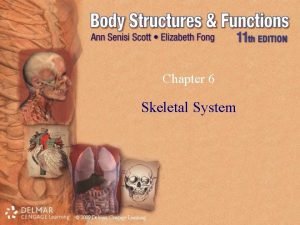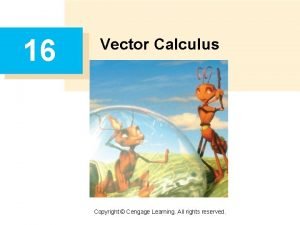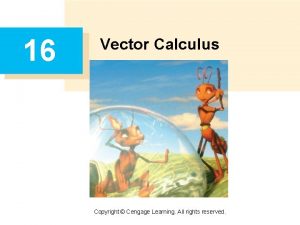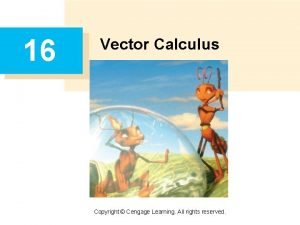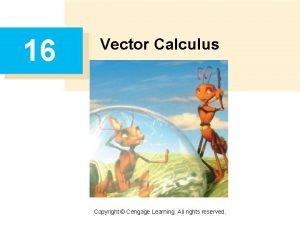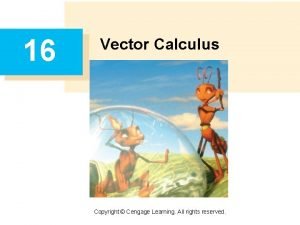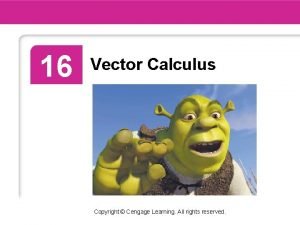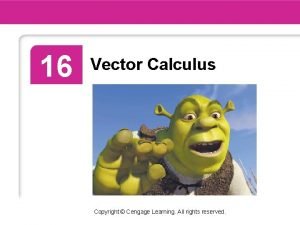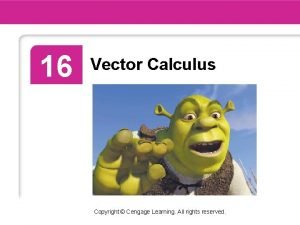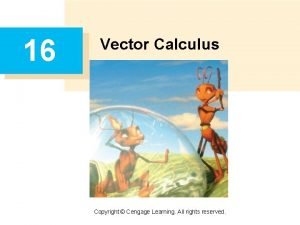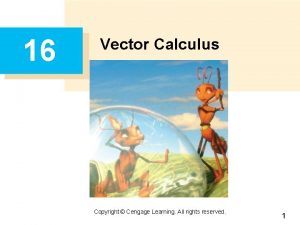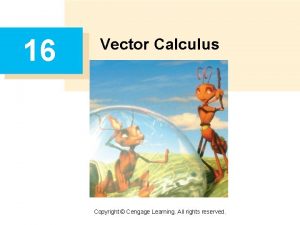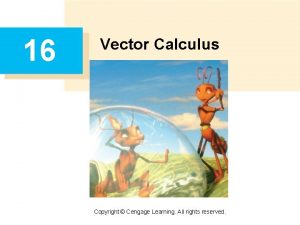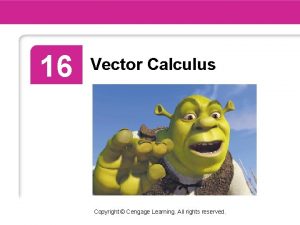13 Vector Functions Copyright Cengage Learning All rights




























- Slides: 28

13 Vector Functions Copyright © Cengage Learning. All rights reserved.

13. 3 Arc Length and Curvature Copyright © Cengage Learning. All rights reserved.

Arc Length and Curvature We have defined the length of a plane curve with parametric equations x = f (t), y = g(t), a t b, as the limit of lengths of inscribed polygons and, for the case where f ' and g' are continuous, we arrived at the formula The length of a space curve is defined in exactly the same way (see Figure 1). Figure 1 The length of a space curve is the limit of lengths of inscribed polygons. 3

Arc Length and Curvature Suppose that the curve has the vector equation, r(t) = f (t), g(t), h(t) , a t b, or, equivalently, the parametric equations x = f (t), y = g(t), z = h(t), where f ', g', and h' are continuous. If the curve is traversed exactly once as t increases from a to b, then it can be shown that its length is 4

Arc Length and Curvature Notice that both of the arc length formulas (1) and (2) can be put into the more compact form because, for plane curves r(t) = f (t) i + g(t) j, and for space curves r(t) = f (t) i + g(t) j + h(t) k, 5

Example 1 Find the length of the arc of the circular helix with vector equation r(t) = cos t i + sin t j + t k from the point (1, 0, 0) to the point (1, 0, 2 ). Solution: Since r'(t) = –sin t i + cos t j + k, we have The arc from (1, 0, 0) to (1, 0, 2 ) is described by the parameter interval 0 t 2 and so, from Formula 3, we have 6

Arc Length and Curvature A single curve C can be represented by more than one vector function. For instance, the twisted cubic r 1(t) = t, t 2, t 3 1 t 2 could also be represented by the function r 2(u) = eu, e 2 u, e 3 u 0 u ln 2 where the connection between the parameters t and u is given by t = eu. We say that Equations 4 and 5 are parametrizations of the curve C. 7

Arc Length and Curvature If we were to use Equation 3 to compute the length of C using Equations 4 and 5, we would get the same answer. In general, it can be shown that when Equation 3 is used to compute arc length, the answer is independent of the parametrization that is used. Now we suppose that C is a curve given by a vector function r(t) = f (t) i + g(t) j + h(t) k a t b where r' is continuous and C is traversed exactly once as t increases from a to b. 8

Arc Length and Curvature We define its arc length function s by Thus s(t) is the length of the part of C between r(a) and r(t). (See Figure 3. ) Figure 3 9

Arc Length and Curvature If we differentiate both sides of Equation 6 using Part 1 of the Fundamental Theorem of Calculus, we obtain It is often useful to parametrize a curve with respect to arc length because arc length arises naturally from the shape of the curve and does not depend on a particular coordinate system. 10

Arc Length and Curvature If a curve r(t) is already given in terms of a parameter t and s(t) is the arc length function given by Equation 6, then we may be able to solve for t as a function of s: t = t(s). Then the curve can be reparametrized in terms of s by substituting for t: r = r(t(s)). Thus, if s = 3 for instance, r(t(3)) is the position vector of the point 3 units of length along the curve from its starting point. 11

Curvature 12

Curvatures A parametrization r(t) is called smooth on an interval I if r' is continuous and r'(t) 0 on I. A curve is called smooth if it has a smooth parametrization. A smooth curve has no sharp corners or cusps; when the tangent vector turns, it does so continuously. If C is a smooth curve defined by the vector function r, recall that the unit tangent vector T(t) is given by and indicates the direction of the curve. 13

Curvatures From Figure 4 you can see that T(t) changes direction very slowly when C is fairly straight, but it changes direction more quickly when C bends or twists more sharply. Figure 4 Unit tangent vectors at equally spaced points on C 14

Curvatures The curvature of C at a given point is a measure of how quickly the curve changes direction at that point. Specifically, we define it to be the magnitude of the rate of change of the unit tangent vector with respect to arc length. (We use arc length so that the curvature will be independent of the parametrization. ) 15

Curvatures The curvature is easier to compute if it is expressed in terms of the parameter t instead of s, so we use the Chain Rule to write But ds/dt = | r'(t) | from Equation 7, so 16

Example 3 Show that the curvature of a circle of radius a is 1/a. Solution: We can take the circle to have center the origin, and then a parametrization is r(t) = a cos t i + a sin t j Therefore so r'(t) = –a sin t i + a cos t j and | r'(t) | = a and T'(t) = –cos t i – sin t j 17

Example 3 – Solution cont’d This gives | T'(t)| = 1, so using Equation 9, we have 18

Curvature The result of Example 3 shows that small circles have large curvature and large circles have small curvature, in accordance with our intuition. We can see directly from the definition of curvature that the curvature of a straight line is always 0 because the tangent vector is constant. Although Formula 9 can be used in all cases to compute the curvature, the formula given by the following theorem is often more convenient to apply. 19

Curvature For the special case of a plane curve with equation y = f (x), we choose x as the parameter and write r(x) = x i + f (x) j. Then r'(x) = i + f '(x) j and r''(x) = f ''(x) j. Since i j = k and j j = 0, it follows that r'(x) r''(x) = f ''(x) k. We also have 10, and so, by Theorem 20

The Normal and Binormal Vectors 21

The Normal and Binormal Vectors At a given point on a smooth space curve r(t), there are many vectors that are orthogonal to the unit tangent vector T(t). We single out one by observing that, because | T(t) | = 1 for all t, we have T(t) T'(t) = 0, so T'(t) is orthogonal to T(t). Note that T'(t) is itself not a unit vector. But at any point where 0 we can define the principal unit normal vector N(t) (or simply unit normal) as 22

The Normal and Binormal Vectors The vector B(t) = T(t) N(t) is called the binormal vector. It is perpendicular to both T and N and is also a unit vector. (See Figure 6. ) Figure 6 23

Example 6 Find the unit normal and binormal vectors for the circular helix r(t) = cos t i + sin t j + t k Solution: We first compute the ingredients needed for the unit normal vector: r'(t) = –sin t i + cos t j + k 24

Example 6 – Solution cont’d This shows that the normal vector at a point on the helix is horizontal and points toward the z-axis. The binormal vector is B(t) = T(t) N(t) 25

The Normal and Binormal Vectors The plane determined by the normal and binormal vectors N and B at a point P on a curve C is called the normal plane of C at P. It consists of all lines that are orthogonal to the tangent vector T. The plane determined by the vectors T and N is called the osculating plane of C at P. The name comes from the Latin osculum, meaning “kiss. ” It is the plane that comes closest to containing the part of the curve near P. (For a plane curve, the osculating plane is simply the plane that contains the curve. ) 26

The Normal and Binormal Vectors The circle that lies in the osculating plane of C at P, has the same tangent as C at P, lies on the concave side of C (toward which N points), and has radius = 1/ (the reciprocal of the curvature) is called the osculating circle (or the circle of curvature) of C at P. It is the circle that best describes how C behaves near P; it shares the same tangent, normal, and curvature at P. 27

The Normal and Binormal Vectors We summarize here the formulas for unit tangent, unit normal and binormal vectors, and curvature. 28
 Copyright cengage learning. powered by cognero
Copyright cengage learning. powered by cognero Copyright 2015 all rights reserved
Copyright 2015 all rights reserved Copyright 2015 all rights reserved
Copyright 2015 all rights reserved Dell all rights reserved copyright 2009
Dell all rights reserved copyright 2009 Copyright © 2018 all rights reserved
Copyright © 2018 all rights reserved Chapter 6:2 interpreting word parts
Chapter 6:2 interpreting word parts Medical terminology chapter 5 learning exercises answers
Medical terminology chapter 5 learning exercises answers Cengage learning heart diagram
Cengage learning heart diagram South-western cengage learning
South-western cengage learning Chapter 13 medical math
Chapter 13 medical math 2009 delmar cengage learning
2009 delmar cengage learning Cengage learning heart diagram
Cengage learning heart diagram Medical terminology learning exercises chapter 1
Medical terminology learning exercises chapter 1 Cengage learning australia
Cengage learning australia Graphing tpr
Graphing tpr Cengage learning
Cengage learning Cengage learning
Cengage learning Wadsworth cengage learning
Wadsworth cengage learning Cengage learning
Cengage learning Cengage learning plant cell
Cengage learning plant cell Cengage learning
Cengage learning Cengage learning
Cengage learning Brooks cole cengage learning
Brooks cole cengage learning The human respiratory system chapter 7 handout
The human respiratory system chapter 7 handout 2014 cengage learning accounting answers
2014 cengage learning accounting answers Cengage learning
Cengage learning Cengage learning
Cengage learning 2009 delmar cengage learning
2009 delmar cengage learning Cengage learning
Cengage learning

